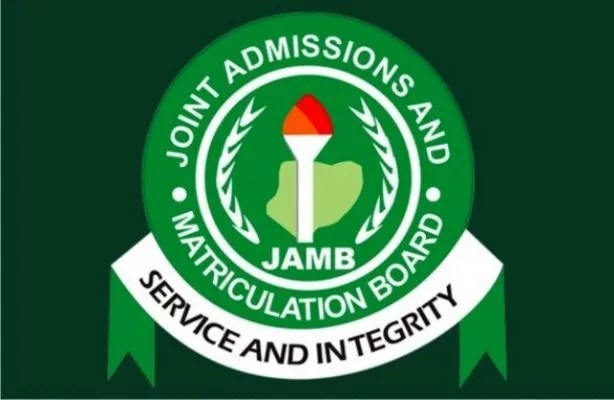
Mathematics lesson note for JSS1 First Term is now available for free. The State and Federal Ministry of Education has recommended unified lesson notes for all secondary schools in Nigeria, in other words, all private secondary schools in Nigeria must operate with the same lesson notes based on the scheme of work for Mathematics.
Mathematics lesson note for JSS1 First Term has been provided in detail here on schoolgist.ng
For prospective school owners, teachers, and assistant teachers, Mathematics lesson note is defined as a guideline that defines the contents and structure of Mathematics as a subject offered at SS level. The lesson note for Mathematics for SS stage maps out in clear terms, how the topics and subtopics for a particular subject, group works and practical, discussions and assessment strategies, tests, and homework ought to be structured in order to fit in perfectly, the approved academic activities for the session.
To further emphasize the importance of this document, the curriculum for Mathematics spells out the complete guide on all academic subjects in theory and practical. It is used to ensure that the learning purposes, aims, and objectives of the subject meant for that class are successfully achieved.
Mathematics Lesson note for JSS1 carries the same aims and objectives but might be portrayed differently based on how it is written or based on how you structure your lesson note. Check how to write lesson notes as this would help make yours unique.
The JSS1 Mathematics lesson note provided here is in line with the current scheme of work hence, would go a long way in not just helping the teachers in carefully breaking down the subject, topics, and subtopics but also, devising more practical ways of achieving the aim and objective of the subject.
The sudden increase in the search for JSS1 Mathematics lesson note for First Term is expected because every term, tutors are in need of a robust lesson note that carries all topics in the curriculum as this would go a long way in preparing students for the West African Secondary Examination.
This post is quite a lengthy one as it provides in full detail, the Mathematics-approved lesson note for all topics and sub-topics in Mathematics as a subject offered in JSS1.
Please note that Mathematics lesson note for JSS1 provided here for First Term is approved by the Ministry of Education based on the scheme of work.
I made it free for tutors, parents, guardians, and students who want to read ahead of what is being taught in class.
JSS1 Mathematics Lesson Note (First Term) 2024
GENERAL MATHEMATICS
Jss1 SCHEMES OF WORK FOR IST TERM
WEEK 1 WHOLE NUMBER (COUNTING AND WRITING IN MILLIONS,& TRILLIONS)
WEEK 2 WHOLE NUMBER (CONTD.,)
WEEK 3 FRACTIONS (TYPES OF FRACTIONS)
WEEK 4 FRACTIONS (EQUIVALENTFRACTIONS AND PROBLEMS SOLVING)
WEEK 5 FRACTIONS (CONVERTION FROM PERCENTAGE TO DECIMAL VICE-VERSA
WEEK 6 FRACTIONS (ADDITION, SUBTRACTION)
WEEK 7 REVIEW OF THE FIRST HALF TERM WORK AND PERIODIC TEST
WEEK 8 FRACTIONS (MULTIPLICATION AND DIVISION)
WEEK 9 L.C.M AND H.C.F (LOWEST AND HIGHEST COMMON FACTOR
WE EK 10 ESTIMATION
WEEK 11 REVISION OF THE FIRST TERM AND EXAMINATION
WEEK 12 EXAMINATION
WEEK 1 TOPIC: WHOLE NUMBERS (COUNTING IN MILLION, BILLIONS AND TRILLIONS)
CONTENTS:
The figures 0,1,2,3,4,5,6,7,8,9 are called digits or unit. Numbers 10, 11, 12, 13, 14, 99 are called Tens, numbers 100,101,… 999 are called hundred. One thousand is written as 1 with 3 zeros.
LARGE NUMBERS
NAME VALUE
One thousand 1000
Ten thousand 10000
One hundred thousand 100000
One million 1000000
Ten million 10000000
One hundred million 100000000
One billion 1000000000
Ten billion 10000000000
One hundred billion 100000000000
One trillion 1000000000000
In our everyday life, we often come across large numbers such as 75800074890.
75 800 074 8 9 0
Billion million thousand hundred ten unit
Example 1: write this in figures: twenty five trillion, three hundred and five billion, six hundred and sixty nine million, one hundred thousand and forty one.
Example 2: ninety billion, three hundred and nine million, ninety one thousand seven hundred and six three.
Solution
- 25 000 000 000 000
305 000 000 000
669 000 000
1 000
41
25 305 669 001 041
- 19 000 000 000
309 000 000
91 000
763
19 309 091 763
Order large numbers
Example 1: arrange these numbers in order of size stating with the smallest: 28980579, 18967547, 2897871, 36497871, 36479568, 18898069, 36478967
Note that 🙁 This arrangement is also called ascending order. The reverse is known as descending order).
NB: Always group large numbers in threes.
Solution
18 898 069, 18 967 547, 28 978 951, 28 980 579, 36 478 967, 36 479 568, 36 497 871
DO THESE
- Write the following in words (a) 567256789, (b) 18000901234
- Write in figures (a) three hundred and twenty – nine billion, five hundred and sixty two million, eight hundred and one thousand, four hundred and thirty three
(b) fifteen trillion, six hundred and seventy one billion, three hundred and ninety one million, eighty eight thousand, five hundred and fifty five.
- Arrange the following numbers in ascending order 1009085941, 1288890563, 102458001, 999999999, 10009002, 105879894167
Assignment
Page 23 exercise 3.1 No 2 page 25 exercise 3.3 No (a, b c)
WEEK 3 & 4 FRACTIONS (TYPES OF FRACTIONS)
CONTENT:
A Fraction is a portion or part of a whole. Imagine a whole as a complete object. For example, the pie below is a whole which can be cut into sectors (or slices) representing different fractions as follows:
Whole (1) half (1/2) three- quarters (3/4)
Types of fraction
- Common fractions or vulgar: ½, ¼, ¾, 3/8 and 5/8 are called fraction. One number over another. Numerator is the term given to the number on the top part of a fraction. De nominator is the term given to the number at the bottom part of a fraction.
- Decimal fractions: are simply called decimals example 0.897, 7.864 etc.
- Proper fraction: the numerator is less than the denominator. e.g. 2/5, ¼,ect
- An improper fractionthe numerator is greater than the denominator e.g 8/3, 12/5 etc.
CHANGING AN IMPROPER FRACTION TO A MIXED NUMBER
EXAMPLE 1: Change 15/4 to a mixed number.
Solution
= = + = =
Example 2: change to improper fraction.
Solution:
= = = =
EQUIVALENT FRACTIONS
Fraction that have the same value are said to be equivalent. Example are ½, 2/4, 3/6, 4/8, 5/10, 6/12 etc.
Example 1: convert 2/9 into an equivalent fraction with the denominator 54
Solution:
2/9 = /54 (divide the second denominator by the first denominator to obtain the multiplier)
54/9 =6
Therefore use the 6 to multiply 2/9= 12/54
2/9 =12/54
Finding the missing part of these fractions: /10 =12/= = 20/50 = / 80
Solution
Step 1 Use 20/50 as your reference fraction because both its numerator and denominator are given. 20/50 = 2/5
10/5 (use the 5 of denominator to get your numerator of /10) =2
Therefore use 2 to multiple both 2/5 =4/10
Step 2 use the 2 to divide the numerator of 12/ to get 6 and use the 6 to multiply 2/5 = 12/30
Step 3: use 5 to divide the denominator of 80 to get 16
Therefore use 16 to multiply 2 / 5 = 32 /80
So 4/10 = 12/30 = 20/50 =32/80.
DO THESE
- Express each of the following fractions as a mixed numbers: (a) 9/5 (b) 15/2
- Express each of the following fractions as improper fraction: (a) 11/2
(b) 43/8
- Copy and complete each of the following: 3/5 = /15 (b) 4/7 = 12/y = y/35 = y/49 = 44/y where y =
ASSIGNMENT: EXERCISE 5.1 NO. 1, 2 & 3; EXERCISE 5.2 NO 4a-j PAGE 36 & 38
WEEK 5 FRACTIONS (CONVERTION FROM PERCENTAGE TO DECIMAL AND DECIMAL TO FRACTION)
CONTENT: To convert a fraction into a decimal, first rewrite the numerator as a decimal, then divide it by the denominator.
Example 1 (a) change into a terminating decimal number (b) to decimal fraction
Solution:
- Numerator 3 can be written I decimal number as 3.0 or 3.00 0r 3.000
= 0.75 I,e 4 divide 3, then add zero, 4 goes in 30 is ,it remain 2, add 0 to make it 20 and 4 in 20 gives 5
Therefore = 0.75
- 8 divies 5,it becomes 0,then add zero to make it 50,it gives 6, it remains 2, add zero it becomes 20, 8 divides 20 is 2, it remains 4, add zero to gives 40, 8 in 40 is 5
Therefore = 0.625.
CONVERTING DECIMALS TO FRACTIONS
To change a decimal into a fraction, count the digits after the decimal, then divide by the appropriate power of 10,i.e 10,100,1000.
Example : convert each of the following decimal numbers into a fraction in lowest term:
- 067 (b) 0.64
Solution
(a) 0.067 = (3 digits after the decimal point i.e divide by 1000)
(b) 0.64 = (as above information) divide through by 4 =
CONVERTING PERCENTAGE TO FRACTIONS
PERCENTAGE IS A SPECIAL TYPE OF FRACTION WITH 100 AS DENOMINATOR. THUS, TO CHANGE A PERCENTAGE TO A FRACTION, DIVIE BY 100.(%)
Example 1: express each of the following as a fraction in its simplest form:
- 30% (b) 45% (c) 161/2 %
Solution
- 30% = 30/100 i.e the zeros cancel each other. the answer is 3/10
- 45% = 45/100 i.e 5 divide both it gives 9 / 20.
- 16 ½ = 39/200 i.e you change the mixed number to improper fraction and then multiply it by %.
WEEK 6
OPERATIONS ON FRACTIONS
ADDITION AND SUBTRACTION
Example 1: Find the value of the following (a) (b) (c)
Solution:
(a): = (since the denominator are the same we just add the numerator together)
(b): ) = ) (since the denominator are the same we just subtract the numerator from each other)
Try question C yourself
Example 2: simplify the following (a) (b) )
Solution:
(a)
(198 + 15 + 34)/24 = (find the L C m of the fraction then add the whole together, the L C M is 24)
= (247/24) = (convert the improper fraction to mixed numbers)
(b)
Solution:
(rearrange by separating the whole numbers from fractions)
= (same denominator)
WEEK 8
MULTIPLICATION AND DIVISION OF FRACTION
Example 1: Simplify the following (a) 4/5 * 2/3 (b) what is the product of 35/17, 2 5/6 and 4/8
- 3/5 ÷ 4/9 (d) 24/5 * 56/8 ÷ 51/9
Solution:
- 4/5 * 2/3 = 8/15( multiple the numerator and denominator together)
- (b) what is the product of 35/17, 2 5/6 and 4/8 = 56/17 * 17/6 *4/8
= 17 divides 17, 6 divides 56 also 4 divides 8
= 14/3 = 42/3
- 24/5 * 56/8 ÷ 51/9= 14/5 * 46/8 * 9/46(change to improper and also change the division sign to multiplication and also change the fraction up and down)
= 14/5 * 46/8 * 9/46 (46 divides 46 etc)
= 63/20 = 33/20
ASSIGNMENT
EXERCISE 5.9; NO 23, 24, 25, 33, 35, 36, 37 AND 40 PAGE 45
EXERCISE 5.12; NO 1, 2, 6, 7, 13 AND 14 PAGE 49
WEEK 9 L.C.M AND H.C.F (LOWEST AND HIGHEST COMMON FACTOR)
COMMON MULTIPLES AND FACTOR
A prime number is a number that can only divide itself. it has two factor which is 1 and itself. Examples of prime numbers are: 2 ,3, 5, 7, 11, 13, 17, 19 etc.
Multiples: A multiple of a number is obtained by multiplying it by any whole number. Example the multiple of 4 are 4, 8, 12, 16, 20 , 24 etc.
Factors: The factor of a number is the whole number that divides the number exactly.
Example 1: (a) find all the factors of 18
(b) State which of these factors are even
( c) state which of these factors are prime numbers
(d) Write the first three multiple of 18
Solution
- Factors of 18 are 1, 2, 3, 6, 9, and 18
- The even numbers are 2, 6, and 18
- The prime numbers are 2 and 3
Example 2: Find the factor pairs of 56
Solution:
1 × 56
2 × 28
4 × 14
7 × 8
Therefore the factors of 56 are; 1, 2, 4, 7, 8, 14, 28, and 56.
Product of a Prime Factor
A prime factor is a factor that is also a prime number. You can find the product of prime factors of a number using a prime factor tree method or using the method of dividing repeatedly by the prime numbers.
Example 2: Express the following numbers, 56 and 108, as products of prime factors in index form.
Solution:
Method 1: dividing repeatedly by using prime numbers
2 56 2 108
2 28 2 54
2 14 3 27
7 7 3 9
1 Index form = 23 x 7 3 3
1 index form = 22 x 32
Method 2: Factor tree
56 108
2 28 2 54
2 14 2 27
2 7 3 9
3 3
Note that the numbers must be a prime numbers
EXAMPLE 1: Find the L C M of 18 and 24
Solution:
METHOD 1 METHOD 2
2 18 24 18 = 2 ×3 ×3
2 9 12 24 = 2 ×2 ×2 ×3
2 9 6 L C M = 2 ×2 ×2 ×3 ×3
3 9 3 = 72
3 3 1
1 1
L C M = 2 × 2 × 2 × 3 × 3 = 72
Example 2: Find the L C M of 72 and 90
Solution:
METHOD 1 METHOD 2
2 72 90 72 = 2 X 2X 2 X 3 X 3
2 36 45 90 = 2X 3 X3 X 5
2 18 45 L C M = 2 X 2 X 2 X 3 X 3 X 5
3 9 45 = 360
3 3 15
5 1 5
1 1
2 x 2 x 2 x3 x 3 x 5 = 360
Example 3: Find the H C F of 72 and 96
Solution: find the prime product of the number and pick the common ones
72 = 2 2 2 3 3
96 = 2 2 2 2 2 * 3
H C F = 2 2 2 * 3 = 24
DO THESE:
EXERCISE 4.2; NO 8, 10, 11, 12 AND 18. PAGE 29
EX 4.5; N0 2 (K L M). PAGE 32
WEEK 10 ESTIMATION
Estimation may be explained as a rough or sensible guess fo a value or calculation. Although, the estimated value is not correct, it gives us an idea of what the correct answer should be.
The common units of length are kilometer (km), meters (m), centimeters (cm), millimeters (mm).Mass = (Tonne, kilogram (kg) gramme (g). Capacity = (litre (l), centiliter (cl), militre(ml)
It is important to be able to choose the most appropriate metric units of measurement to use.
Example: To measure distance less than a metre, smaller units such as milimetre (mm), and centimeter are used to measure large distance, metre and kilometer (km) are used.
State the metric units of the length you would use to measure the following:
(a). Length of your class room = metre (m0
(b). Length of your fingers nail = milimetre (mm)
(c). your height = centimeter (cm)
(d) Distance between Lagos and kaduna = kilimetre (km)
(e). the height of a building = metre (m)
SIGNIFICANT: TO ROUNDOFF A NUMBER CHANGE 0,1,2,3,4 TO 0 WHILE 5,6,7,8,9 TO 1 AND ADD IT TO THE NEXT NUMBER
Example 1: round off 492.763 to (a) 3 s.f (b) 3 s.f (c) 2 d.p (d) 4 d.p
Solution:
(a). 492.763 = 49 (since the third number is 2 it has change to zero)
(b). 492.763 = 493 (the 2 as change to 3 because 7 as change to 1 and been added to 2 to become 3)
(c).492.763 = 492.76 (in decimal point we count after the point).
(d). 492.763 = 492.7630(since the number is not upto 4d.p we add zero to it.)
DO THESE
PAGE 86 EXERCISE 8.3 N0 1(G TO I) , N0 2 (G TO I)
Hope you got what you visited this page for? The above is the lesson note for Mathematics for JSS1 class. However, you can download the free PDF file for record purposes.
If you have any questions as regards Mathematics lesson note For JSS1 class, kindly send them to us via the comment section below and we shall respond accordingly as usual.



